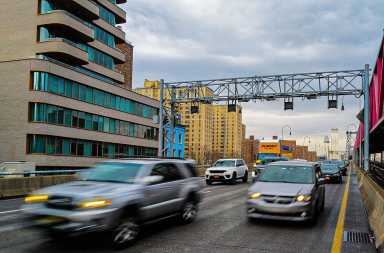Congestion Pricing: Hochul Celebrates Early Success of Manhattan Toll Program

A Half-Year of Congestion Pricing in NYC: Progress, Profits, and Public Perception
Six months into the implementation of congestion pricing in New York City, the results are coming into focus. Governor Kathy Hochul, alongside key political allies and Metropolitan Transportation Authority (MTA) officials, has declared the program a major success. Since its launch on January 5, the initiative—charging vehicles a base toll of $9 to enter Manhattan south of 61st Street—has generated over $219 million in net revenue for 2025, with projections suggesting it could hit $500 million by year’s end.
Measurable Benefits Across the Board
According to MTA reports, one of the most significant outcomes has been the reduction in traffic. Daily vehicle counts within the congestion relief zone have dropped by approximately 67,000 cars since the program began. Subway ridership has also seen a noticeable uptick, rising 7% from January to May compared to the same period last year.
Businesses within the zone have reported positive trends as well. Broadway, in particular, experienced its highest season ever, raking in $1.9 billion in ticket sales—a sign that fewer cars and more foot traffic may be good for commerce.
Janno Lieber, Chair and CEO of the MTA, emphasized that the program is delivering on all fronts: reduced traffic, improved travel speeds, increased safety, and noise reduction. He also highlighted that the success of congestion pricing proves New York State can execute large-scale initiatives that meaningfully improve quality of life.
Legal Challenges and Political Resistance
Despite these gains, the program remains under legal threat. The MTA and New York State continue to battle efforts by the Trump administration to dismantle congestion pricing through federal court actions. Governor Hochul remains defiant, stating that the state has already fended off five months of “unlawful attempts” to undo the program and will continue to do so.
“This is about protecting New Yorkers’ way of life,” Hochul said. “The cameras are staying on.”
Mixed Reactions From Residents
Public sentiment remains divided. While some residents and commuters acknowledge improvements, others remain skeptical or critical.
Mary Mattucci of Staten Island called the policy a "money grab," echoing concerns that the tolls primarily serve as a revenue generator rather than a genuine solution to urban mobility issues.
Professional drivers offered conflicting accounts. David Palermo, a Manhattan truck driver, claims traffic congestion hasn’t improved and that travel times remain frustratingly long. In contrast, a Queens-based taxi driver gave a nonchalant “it’s ok” when asked about traffic changes.
Bus service advocates also raised concerns. Filippa Grisafi, an express bus advocate from Staten Island, noted that while buses seem to require less maintenance, delays due to vehicle shortages have worsened commute times. An MTA bus driver echoed this, adding that double-parked trucks and poorly utilized bike lanes are now bigger contributors to gridlock than before.
Danny Pearlstein of the Riders Alliance took a more optimistic stance, pointing out that congestion pricing is gaining popularity among those who use and pay for the system. He also praised the environmental benefits, noting improved air quality across the region—even in nearby New Jersey, despite Governor Phil Murphy’s opposition to the tolling plan.
In essence, New York’s bold experiment with congestion pricing continues to evolve. While early data suggests measurable success, the real test lies in maintaining momentum, addressing lingering criticisms, and ensuring that the city's transportation future is both efficient and equitable.
Post a Comment for "Congestion Pricing: Hochul Celebrates Early Success of Manhattan Toll Program"
Post a Comment